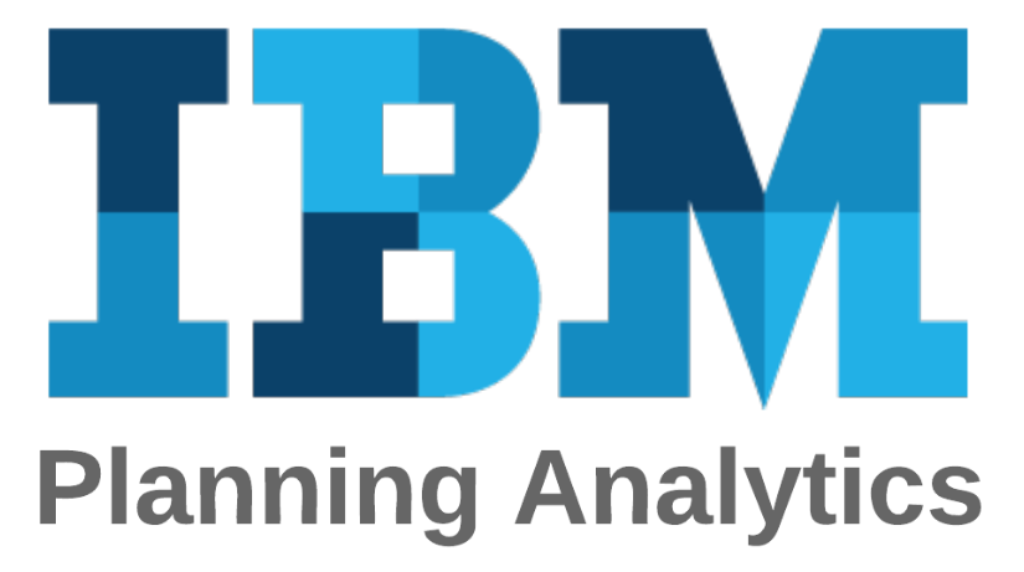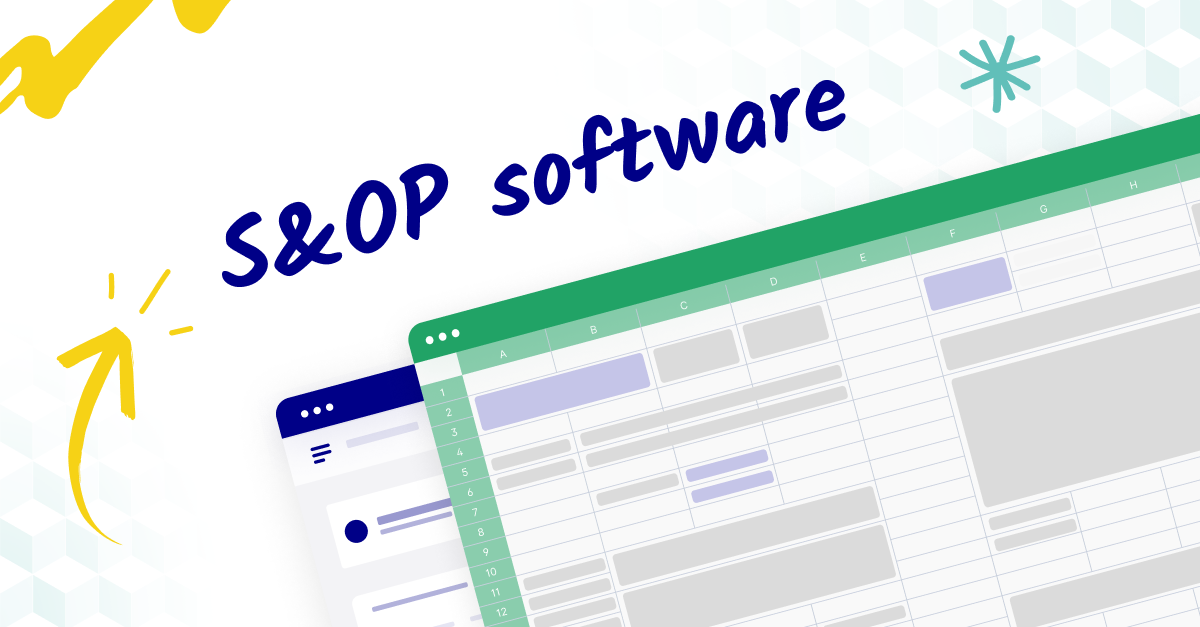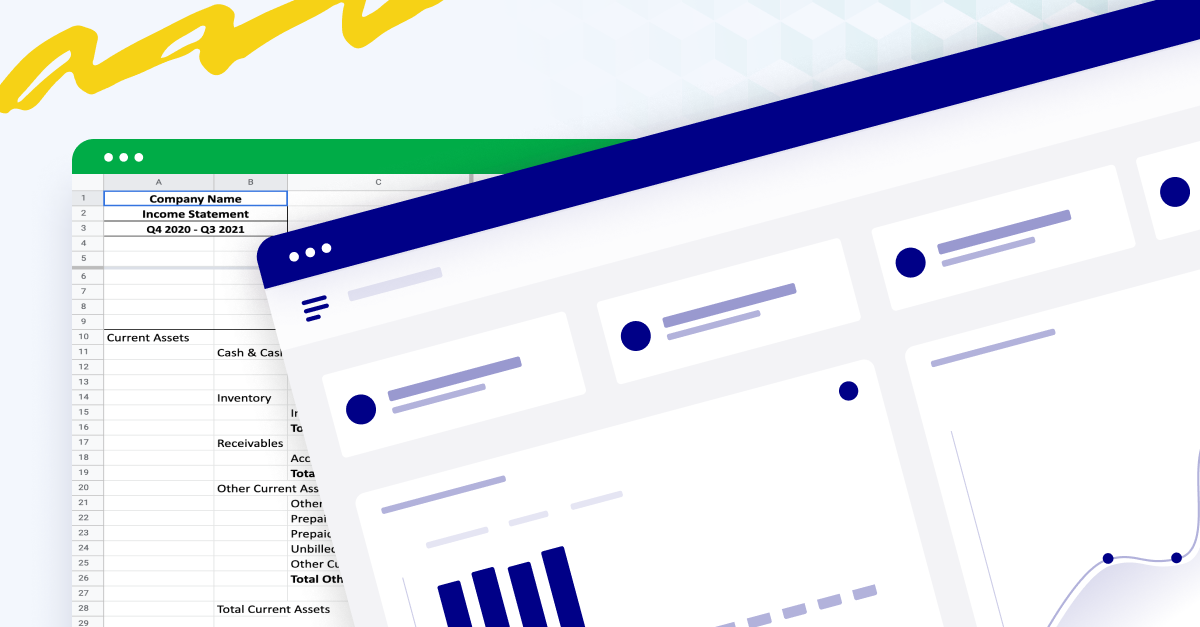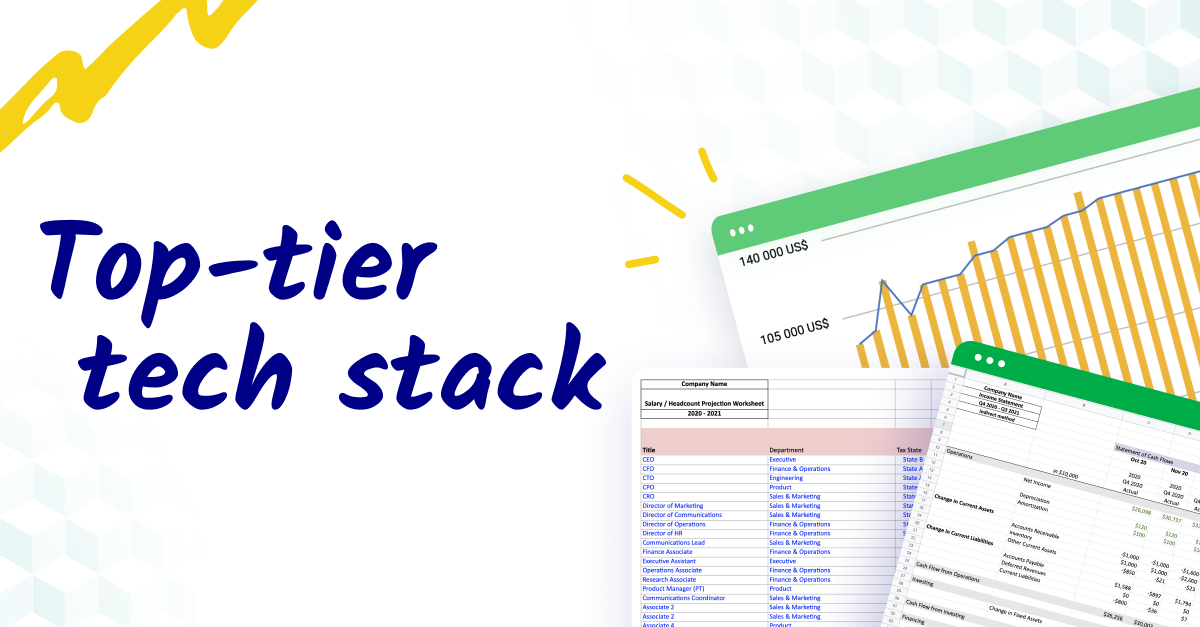What is sales and operations planning (S&OP)?
Sales and operations planning (S&OP) isn't just a strategy; it's the heartbeat of proactive business management, essential for efficiently balancing supply with demand. The objective is clear: avoid excessive inventory and prevent missing out on opportunities due to insufficient stock.
The strength of S&OP lies in effective collaboration. It's about creating a unified approach where all departments converge—sales teams provide their projections, and operations confirm their capacity to meet these expectations. By aligning these elements, companies can sidestep issues such as overstocking or sales losses, which directly influence financial outcomes.
Speaking of financial outcomes, S&OP plays a significant role in financial planning and analysis (FP&A). When S&OP provides up-to-date insights into operations, financial forecasting transforms into a more accurate science. This clarity helps finance pros anticipate cash flows, operational costs, and revenues, enabling more controlled and informed financial planning.
There’s just one problem: the marketplace is ever-evolving, and a set-and-forget mindset can render plans obsolete. So, how do you keep this process agile and responsive?
This is where S&OP software comes in.

Benefits of sales and operations planning software
In finance, precision, efficiency, and strategic foresight aren’t just nice to have—they’re essential. S&OP software offers several key benefits that directly resonate with the needs and responsibilities of finance and FP&A leaders, including:
1. Enhanced forecast accuracy
S&OP software improves the accuracy of financial forecasts by integrating real-time data from various business functions. By providing a consolidated view of sales forecasts, inventory levels, and production capabilities, these tools allow for more reliable and detailed financial projections. The result? More confident decision-making and fewer costly surprises.
2. Data-driven decision making
The era of relying on intuition or outdated reports is over. S&OP software provides finance leaders with data visualization and advanced analytics capabilities, turning raw data into actionable insights. This feature supports more strategic resource allocation, investment decisions, and risk management practices, all backed by solid, real-time data.
3. Improved working capital management
Cash is king, and managing working capital is crucial for any organization. Through precise demand and supply planning, S&OP software helps companies minimize tied-up capital in excess inventory and reduce stockouts. By optimizing inventory levels, businesses can free up cash that is essential for other strategic investments or operational expenses.
4. Operational cost reduction
By aligning production and distribution with demand, companies can decrease unnecessary expenses associated with overtime, expedited freight, and storage costs. S&OP software helps fine-tune the operational planning process, contributing to leaner operations and more efficient use of financial resources.
5. Scenario planning for strategic agility
The business environment is fraught with uncertainties. S&OP software enables finance leaders to create various 'what-if' scenarios to anticipate possible changes in the market. This capability is crucial for an effective strategic planning process, helping leaders to pivot quickly and make informed decisions that protect financial stability and exploit emerging opportunities.
Key features of effective S&OP software
While the benefits of S&OP software have a broad impact across an organization, it's the specific features of these tools that enable such advantages. For finance and FP&A leaders, understanding these functionalities is essential to leverage the software fully.
Here are the key features that make S&OP software indispensable:
1. Real-time data integration
S&OP software pulls together data from diverse business units in real time, ensuring that all planning is based on the most current figures. This feature eliminates the delays and inaccuracies of manual data compilation, providing a single source of truth that is essential for effective decision-making.
2. What-if scenario analysis
One of the most strategic features is the ability to run 'what-if' scenarios. Finance leaders can simulate different market conditions, supply chain disruptions, or demand spikes to understand potential impacts on finances and operations. This functionality supports robust contingency planning and risk management.
3. Financial integration and reconciliation
S&OP software directly integrates with financial systems, ensuring that operational plans are always aligned with financial goals. It enables a seamless reconciliation between the operational budget and the financial plan, ensuring consistency and aiding in the achievement of revenue objectives and profitability metrics.
4. Collaborative planning
Enhancing communication and collaboration across departments, S&OP software features platforms for shared insights and plan development. This unified approach ensures strategies and targets are consistent company-wide, supporting cohesive, informed decision-making processes.
5. Performance analytics and reporting
With built-in analytics, users can track performance against key financial and operational KPIs. Customizable dashboards offer real-time visibility into various metrics, and automated reporting capabilities ensure that stakeholders are always informed of the company's status and progress.
6. User-friendly interface
Despite the sophisticated analytics and integration, S&OP software is designed for user-friendliness. Intuitive interfaces, clear navigation, and accessible training resources mean a lower learning curve, quicker adoption, and easier everyday use for varied team members.
7. Customization capabilities
While S&OP software comes with standard features, the one-size-fits-all approach is not conducive to every business model. Customization plays a pivotal role in aligning the software's capabilities with a company's specific challenges, industry quirks, and financial goals.
For example, a business with seasonal sales spikes might need enhanced inventory management features, while a company with a diverse supplier base may focus on sophisticated supply planning. This tailored approach ensures the S&OP process is relevant, practical, and valuable in guiding financial strategies and meeting specific financial objectives.
Top S&OP software options to consider for your business
The right S&OP software can synchronize your demand and supply balance, integrate strategic planning, and help in executing plans at the operational level.
Let’s dive deeper into some top-tier S&OP software options, highlighting their key features, ideal user bases, and pricing structures to help you make an informed decision for your business needs.
1. Cube

Cube is the fast, flexible, and scalable FP&A solution built by finance, for finance. It empowers your spreadsheet with trusted, managed data so you can report, analyze, and plan your way.
The platform provides finance and FP&A leaders with quick, seamless access to the data necessary for effective sales and operations planning. With it, you can:
- Drive better planning and performance without changing how you work
- Strategize with speed and agility using real-time insights and automation
- Connect with any source system, browser, and sheet in moments, so you don't have to change your work
- Work directly with most finance and business systems including ERP, CRM, HRIS, Business Intelligence systems, and more
Best for:
Cube is best for SMBs and midmarket FP&A teams looking to save time and grow and that want a solution that will scale with their organization's complexity.
Pricing:
Cube offers multiple pricing tiers based on company and size, FP&A needs, and advanced integrations, starting at $1,250/month for lean finance teams and $2,450/month for companies looking to scale.
2. Anaplan

Anaplan for sales and operations planning connects plans and business strategy across sales, supply chain, product innovation, finance, and trade partners. With Anaplan for sales and operations planning, you can easily adjust operations plans, conduct scenario planning, and recalibrate planning models when business situations change.
Anaplan’s Connected Planning platform empowers a connected approach to best-in-class S&OP. With it, you can:
- Effectively manage product introduction and end-of-life
- Anticipate demand using statistical and consensus forecasting
- Drive alignment across capacity, production, and inventory planning
Best for:
Anaplan is best for large enterprise customers with a strong IT team ready to lead an enterprise-scale transformation initiative.
Pricing:
Anaplan offers basic, professional, and enterprise packages with a complex array of included features, integrations, and capabilities. Prices are not listed on their website.
3. IBM Planning Analytics

IBM Planning Analytics is an integrated supply chain analytics software that incorporates both internal and external datasets, such as resource shortages, capacity requirements, weather forecasts, providers and customer satisfaction surveys.
It allows you to blend advanced analytics and what-if scenario analysis into your production planning, giving you the foresight to pivot quickly, turning disruptions into opportunities. With it, you can:
- Integrate other ERPs/GLs data sources and quickly balance supply and demand, optimize logistics and inventory management
- Gain real-time visibility into disparate data sources to drive operational efficiency
- Build what-if scenarios to deliver more accurate sales and operations plans and forecasts
Best for:
Given its features and capabilities, IBM Planning Analytics is best suited for medium to large enterprises, organizations that require detailed and multi-dimensional forecasting models, or businesses requiring integration with existing IBM solutions.
Pricing:
The pricing for IBM Planning Analytics is listed as $150/user/month (excluding taxes).
4. Pigment

Pigment is a business planning software that enables you to plan, optimize, execute, and track the performance of your sales and operations in real time–all from one central location.
The platform provides visibility into the current state of your organization and helps you stay ahead of customer demand by providing accurate forecasts for future planning. With it, you can:
- Dissolve siloing issues and ensure that your entire team is working from the same page with collaborative workspaces
- Integrate a wide range of applications and services, including ERP systems, CRMs, and supply chain management solutions
- Forecast and calculate the data you need to stay ahead of customer demand
Best for:
Given its features and value propositions, Pigment is best suited for medium to large enterprises and companies operating in rapidly changing industries.
Pricing:
Pigment does not make its pricing information public. They offer three pricing plans and prefer that customers reach out to them for a quote on each plan.
Conclusion
Ultimately, the right sales and operations planning software will not only align with your company's current operational challenges and objectives but also adapt to future growth and changes, proving itself a long-term asset. Investing time in thorough research and consideration of each option will pay dividends in operational efficiency, cost reduction, and strategic positioning in the competitive marketplace.
Want to learn more about why Cube might be the right fit for your business needs? Request a free demo today.




.png)









.png)




.png)

